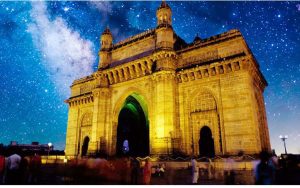India’s Space Policy Focus of Recent Event

By Kassidy Menk
The India Center hosted Rajeswari (Raji) Rajagopalan, Ph.D., director of the Centre for Security, Strategy and Technology at the Observer Research Foundation, New Delhi in a virtual discussion titled “Launching Further: A Discussion on India’s Space Policy” on March 2, 2022. Brendan Byrne ’13, space reporter at WMFE, moderated the event. Attendees asked questions and engaged in discussion during the webinar.
India’s civilian space program has grown rapidly since its introduction in the 60s. Starting in 1969, the Indian Space Research Organization (ISRO) understood important key technologies and what their development could do to change people’s lives. Since then, there has been a lot of public support for the programs. Even with a relatively modest budget allocated to the program, the achievements have appealed to the larger public and allowed for a bigger push in STEM and space education.
India has had several international collaborations. The closest active partners are the U.S. and France. There has been a joint working group with the U.S. for over two decades that collaborated on India’s first lunar and Mars missions. When asked to address the current Ukrainian crisis and its effect on space collaboration between India and Russia, Rajagopalan stated that space relations between the two countries had been waning for almost a decade. In the mid-2010s Russia walked out of the second lunar agreement it had with India. Since the invasion of Ukraine, India has sent aid to Ukraine but abstained from voting at the UN Security Council to condemn Russia’s actions. There is hope that current political tensions do not affect planned space missions, but some security partners are uneasy with India’s abstention. International collaborations are important for India because space missions are costly and impact India’s modest space program budget. Space collaboration has also become a part of expanding international diplomacy and developing international interests.
Collaborations are also a consequence of the space program almost always being state-run. India has had a difficult time accepting the private space sector. Though it has been slowly maturing, many young people who put money into the private sector have moved to different countries that better facilitate space development. Rajagopalan described this as a “brain drain” and explained that India needs to have a politically and legally more favorable outlook to bring back talent to the country. Without accepting the private sector, India may always fall behind other leading space programs around the world.
Nevertheless, there are still hopes for some future endeavors. The NASA-ISRO Synthetic Aperture Radar (NISAR) program intended to launch in 2023 is a collaboration hoping to send radars to study Earth’s changing ecosystems, dynamic surfaces and ice masses. Additionally, NASA’s Artemis program to send humans back to the moon and establish a permanent scientific presence is something to look forward to. India has not yet joined this mission. Russia and China have proposed building a similar lunar research station, which could be an opportunity for India. Rajagopalan commented that the global community will most likely be divided based on political leanings rather than space merits.
In the long term, Rajagopalan says India’s space future is very bright. There has been a lot of progress on security governance as more countries begin to weaponize space. India has also worked with the United Nations on debris remediation strategies, but this has a long way to go. As of now, India’s first human space mission is planned to be in 2023 with even more missions to study our solar system on the horizon.
Watch the full discussion here.
